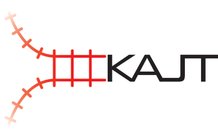Research Program
The program “Capacity in the railway traffic system” (in Swedish: Kapacitet i järnvägstrafiken – KAJT) aims at strengthening the railway systems ability to meet the transportation needs of society. The research goal in the program is to optimize the usage of the railway system and create efficient and reliable traffic movements with associated services. KAJT contributes to providing the railway industry with better concepts, tools and methods based on infrastructural conditions at strategic, tactical and operational level so that Swedish railway become the world leader in efficiency, quality and flexibility.
The program takes the entire process and validity of the train schedule into account. It is important to see the whole picture and that research within different parts of the train planning process has insight into related areas. This includes maintenance work and scheduling maintenance work, as well as the impact of the timetable and maintenance on the railway operators’ traffic. The overall approact to the current issues in the proposed industry program provides a holistic view along the entire traffic planning, its implementation and follow-up.
The holistic view of the future efficient train traffic process is a potentially important success factor. The individual research groups cooperate and support each other within various sub-projects. As a result, the traffic process can be seen as a whole. It is ensured that the combined program’s competences can interact in projects to find solutions to central challenges. An example of this may be to see traffic planning and operational control as parts of the same process, and that it is only when these can be made to collaborate that the whole becomes good. Another example may be not only studying automated systems within traffic control or only support human controllers, but studying applications in operational context and thereby creating solutions that have the greatest possible conditions to function in practice.
The research program consists of three main components: International collaboration and Shift2Rail, core research areas and complementary research areas.
Core research areas
The core research area defines the program's primary competence and focus. Within the core area, the partners of the research program are Sweden's leading research resource. The partners together hold leading expertise to conduct research in all aspects of the field. The core research areas are:
- Strategic capacity planning
- Tactical capacity planning
- Operational traffic control and train operation
Complementary research areas
The complementary research areas is defined as what KAJT explore in addition to the core areas as a complement. The complementary areas change more dynamically than the core areas which are fixed. Complementary areas can be added and removed depending on current needs. Some complementary areas have a lot of research activity while some have less research. The complementary research areas are:
- Future transport system and traffic demand
- Railway side system and connection to the railway network
- Planning of transport networks, vehicles and staff
- Maintenance and traffic
- Humans, digitalization and automation
- Traffic information and disturbance management
- Signalling systems and traffic management systems
- Follow-up and feedback
International collaboration and Shift2Rail
International collaboration and Shift2Rail is an component of the research program to make it visable that KAJT is internationally active. The research conducted in the international projects and in the Shift2Rail projects connects to the research program core areas and complementary areas.
KAJT related projects
KAJT related project are projects that do not formally belong to KAJT (not handled via KAJT programme committy and board), but have a project topic that is within or very close to KAJT reserach program. KAJT related projects are also found in e.g. KAJT project catalogue.


